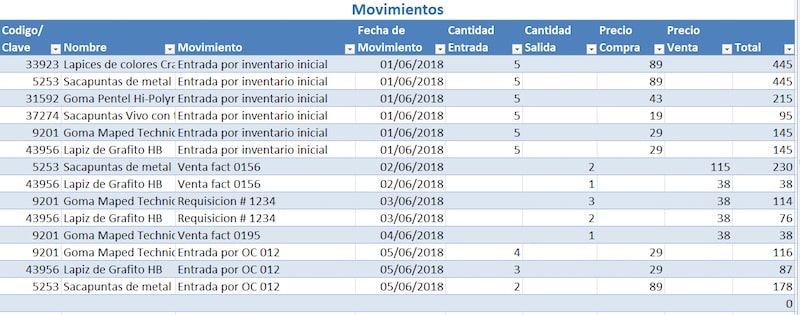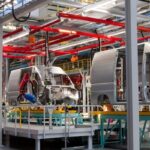We explain what an inventory is, its usefulness, classification and how to carry it out. Also, its advantages, disadvantages and various examples.

What is an inventory?
An inventory is the detailed classification of the movable and immovable property that makes up the commercial flow of a person or a company. Inventories are carried out in a certain period of time.
With inventory, large and small companies carry exhaustive control of merchandise and sales that are carried out while the commercial period passes. At the end of this period, the company obtains the final balance and compares it with that of other years to draw conclusions and take commercial actions based on the result.
See also: Quality management
What is an inventory for?
Inventory is used in companies as a control and profit recording system since it provides summarized and concrete information about buying and selling actions of goods or services.
The direct relationship between inventory and accounting is the central core of commerce, which is why companies must always maintain tenacious control in their operations. Through the inventory you can know the current status of the company from there to make decisions that allow it to be administered and managed profitably.
Knowing the demand for a product is important to make wholesale purchases of raw materials or inputs and reduce costs, which allows maintaining constant production without shortages of inputs.
Types of inventories
There are different types of inventories that vary depending on the size or particularity of each company and the type of production.
According to its shape:
- Inventory of finished products Made up of manufactured products that will be or are offered for sale.
- Inventory of raw materials Made up of elements that once processed will be a product.
- Inventory of products in the manufacturing process Made up of products that are in an intermediate process, they are neither raw material nor a finished product, that is, they are being carried out or formed.
Depending on the moment:
- Initial inventory Carried out before the beginning of operations in a company.
- Final inventory Performed by the company at the end of each accounting period.
According to the periodicity:
- Perpetual inventory It is managed technologically through database software. Data is updated instantly at each input or output of a product.
- Periodic inventory It is carried out through a physical count of merchandise every certain period of time.
According to logistics:
- Reserve inventory. Formed by surplus production that is used in the event of an increase in demand or failures in the production process.
- Inventory in transit. Made up of those products that have not yet arrived at the company since they are in the hands of suppliers or transportation.
- Cycle inventory. Made up of merchandise or raw materials that are purchased in surplus to reduce the cost per purchase unit.
- Forecast inventory. Formed by surplus merchandise that is produced in periods of low demand to supply periods of high demand.
- Decoupling inventory It is used between two processes whose productivity rate is not synchronized.
How to create a periodic inventory?
- Delimit the products to be inventoried. It is important to establish which products are going to be inventoried to remove them and isolate them so that they do not mix with the rest of the merchandise. You can have a special shelf or room to take inventory.
- Choose a date. Many companies carry out this work on a quarterly or semi-annual basis and some have incorporated a perpetual inventory (after making an initial inventory and uploading the information to software, the entry and exit of merchandise is updated automatically). It is advisable to choose a day when the business is closed to the public. Keep in mind that the process may take more hours or days than stipulated.
- Hire people if necessary. The inventory process is usually a long and tedious job; depending on the number of pieces to be inventoried, labor from outside the company or business can be hired to carry out the work. This must be taken into account when preparing the budget.
- Have office supplies. Stationery items (labels, pens, sheets) are essential to achieve neat and orderly work. Labels can be used to label the products or group of products already inventoried.
- Establish a code to classify different types of merchandise. It is advisable to assign a code to each product, this will allow you to find the products within the spreadsheet in a simpler way in the future.
- Choose a spreadsheet or software to enter the data. As the merchandise is accounted for, the data is entered in pencil on a spreadsheet or an online spreadsheet or software is used to consult it in the future in a simple and quick way.
Advantages and disadvantages of inventory
Advantages:
- It works as an order and control mechanism.
- It is used to detect losses or theft.
- Allows you to know production levels.
- It helps to know the value of a company.
- It allows you to know the demand curve and face it.
Disadvantages:
- It requires a large amount of labor to carry out the process.
- It represents a large storage cost.
- It consumes a large amount of time.
Inventory Example


Continue with: Cost accounting
References
- “Inventory” on Wikipedia.
- “The physical inventory” in CEUPE.
- “Inventory” in Collins.
- “Managing your business inventory” in Business.





